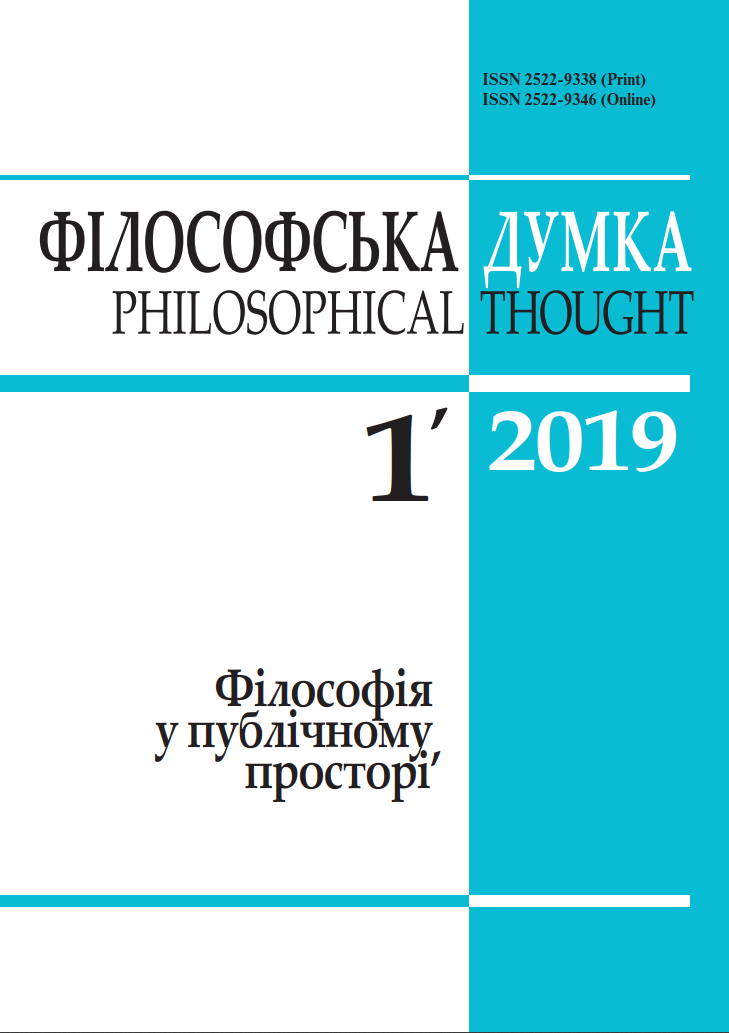Forty years after: reconsidering the problem of Descartes’s Natural Institution theory vs the Coextension theory
Abstract
The article discusses Margaret Wilson’s argument to the point that Descartes’s account of the mind-body interaction is incoherent because it involves two conflicting theories, the Natural institution theory and the Coextension theory, and later treatments of the problem by Marleen Rozemond, Minna Koivuniemi, and Edmond Curley. The first section deals with Wilson’s suggestion that Descartes’s Natural Institution theory conflicts with his statement that sensations arise from the soul-body union. The case is made that the suggestion is likely to be mistaken, and that the simplest way to reconcile the theory and the statement is to consider the union as an enduring dispositional relationship that is a precondition for particular interactions and their effects. The second section examines Marleen Rozemond’s alternative explanation of how the union is supposed to explain interactions and the qualitative character of sensations; it is argued that this account fails to provide a genuine tenable alternative to what Rozemond calls ‘interactionism’. The third section discusses the recent article by Koivuniemi and Curley, which answers Wilson’s second worry about the coherence of Descartes’s views on the union. The author also points out and explains away the seeming discrepancy between Koivuniemi’s and Curley’s account of the union, insofar as it treats the body-to-mind and mind-to-body directions of interaction symmetrically, and Wilson’s and Rozemond’s accounts, insofar as they involve a marked asymmetry in favour of the body-to-mind direction.
References
Chappell, V. (1994). L’homme cartesien, In Beyssade, J.-M. and Marion, J.-L. (eds.) Descartes: Objecter et répondre (pp. 403-426). Paris: Presses Universitaires de France.
Cottingham, J. (1985). Cartesian Trialism. Mind, Vol. 94, 218-230.
Descartes, R. (1996). Œuvres complètes in 11 vol. (Adam, Ch. and Tannery, P., eds.). Paris: Vrin.
Descartes, R. (1985). The Philosophical Writings of Descartes. (Cottingham, J., Stoothoff, R., and Murdoch, D., eds. and transl.). Volumes I-II. Cambridge: Cambridge University Press.
Descartes, R. (1991). The Philosophical Writings of Descartes. (Cottingham, J., Stoothoff, R., Murdoch, D., and Kenny, A., eds. and transl.). Vol. III. Cambridge: Cambridge University Press.
Descartes, R. (1911). The Philosophical Works of Descartes in 2 vols. (Haldane, E. S. and Ross, G. R. T., eds. and transl.). Cambridge: Cambridge University Press.
Garber, D. (1992). Descartes’ Metaphysical Physics. Chicago: University of Chicago Press.
Gouhier, H. (1987). La pensée metaphysique de Descartes. 4th ed. Paris: Vrin.
Hoffman, P. (1986). The Unity of Descartes’s Man. Philosophical Review, Vol. 95, 339-370.
Hoffman, P. (1990). Cartesian Passions and Cartesian Dualism. Pacific Philosophical Quarterly, Vol. 71, 310-333.
Koivuniemi, M. and Curley, E. (2015). Descartes on the Mind-Body Union: A Different Kind of Dualism, In Garber, D. and Rutherford, D. (eds.) Oxford studies in early modern philosophy, Vol. 7 (pp. 83-122). New York, Oxford: Oxford University Press.
Richardson, R. C. (1982). The «Scandal» of Cartesian Interactionism. Mind, Vol.91, 20-37.
Rozemond, M. (1998). Descartes’s Dualism. Cambridge, Massachusetts, and London: Harvard University Press.
Schmaltz, T. (1992). Descartes and Malebranche on Mind and Mind-Body Union. The Philosophical Review, Vol. 101, 281-325.
Wilson, M. (1978). Descartes. London, New York: Routledge.
Downloads
-
PDF
Downloads: 223
Published
How to Cite
Issue
Section
License
Authors who publish with this journal agree to the following terms:
- Authors retain copyright and grant the journal right of first publication.
- Authors are able to enter into separate, additional contractual arrangements for the non-exclusive distribution of the journal's published version of the work (e.g., post it to an institutional repository or publish it in a book), with an acknowledgement of its initial publication in this journal.
- Authors are permitted and encouraged to post their work online (e.g., in institutional repositories or on their website) prior to and during the submission process, as it can lead to productive exchanges, as well as earlier and greater citation of published work (See The Effect of Open Access).


